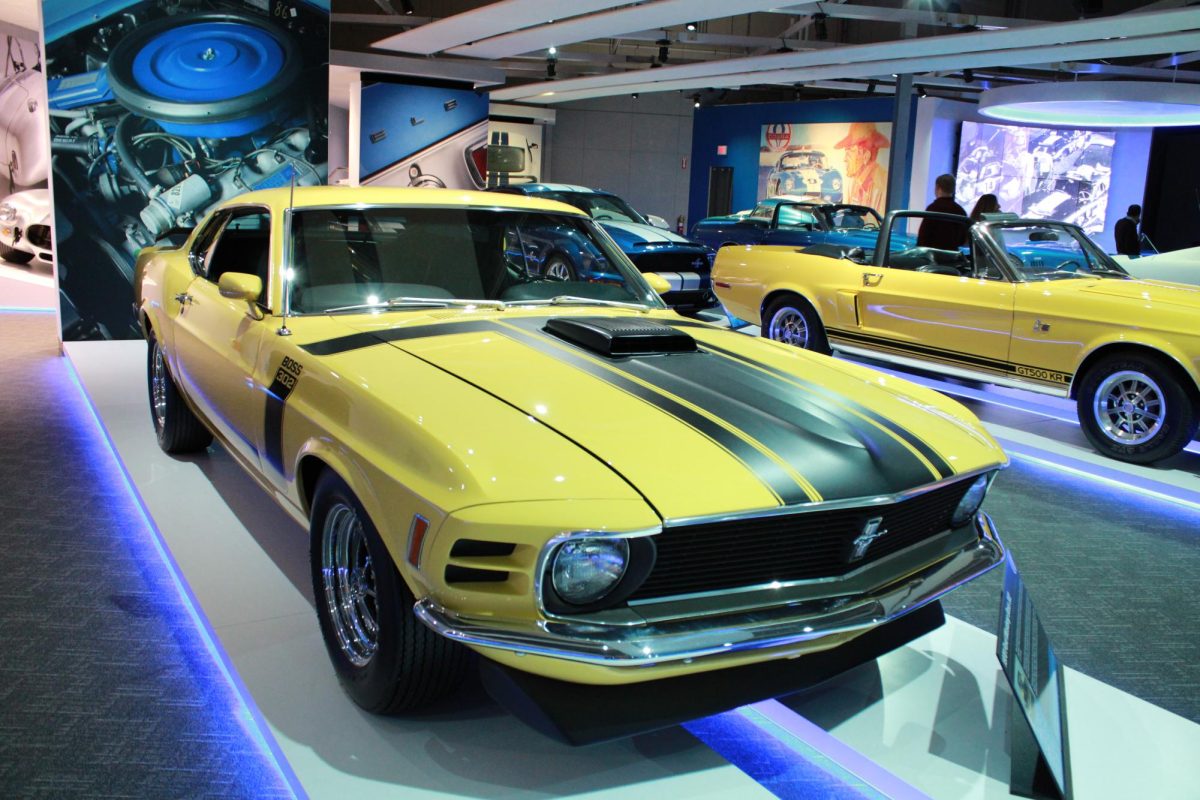On April 17, 1964, Ford officially launched the Ford Mustang, a mere sixteen days after the release of the Plymouth Barracuda, a pioneer of the modern age of muscle cars. Originally projected to only sell 100,000 yearly, the Mustang had one of the most successful car models launches of all time. The Mustang, along with the success of the first all-American produced car to win Le Mans, the Ford GT40, painted Ford in a positive and successful light. However, in 1967, General Motors released the Chevrolet Camaro, a directly competing muscle car to the Mustang, and the Mustang vs. Camaro rivalry began. Ford needed to create a muscle car dedicated to being better than the Camaro, and additionally wanted to take control of the SCCA’s Trans- Am Road race of 1969. In 1968 Ford, with Carrol Shelby, built the solution, the Boss 302 H.O. engine. The Boss 302 engine was a 5.0l naturally aspirated V8 that produced roughly 290 horsepower at 5200 rpm. The 302 in the name is in reference to it being a 302 cubic inch engine. Ford placed this engine into the New 1969 and 1970 Mustang Boss 302, along with the Mercury Cougar Eliminator of the same year, making some of the most distinct Ford muscle cars ever, with a maximum speed of 137 mph and reaching 60 mph in about 6.9 seconds. These numbers are slow by today’s standards, but in 1969, it was a beast of a muscle car. Carrol Shelby, who had helped to build the GT40, which dominated Le Mans, helped to drive the racing team into becoming a fierce competitor in the Trans-Am races. The car was styled by Larry Shinoda, who grew up in Los Angeles and had begun working for General Motors to pursue car modding. While at General Motors he helped to design the 1959 Chevrolet Impala, and the Mako Shark, a concept car which eventually became the Chevrolet C3 Corvette. Shinoda was brought onto the project by the new president of Ford, “Bunkie” Knudsen, who had also previously worked for General Motors.
One day while Shinoda was working on a prototype of the car, another worker asked him what he was working on. Because the project was still a secret at the time, Shinoda replied “The boss’s car.” This served as the inspiration to name the car the Boss 302. Initially, the Boss 302 did not secure first place in the SCCA races due to a combination of tire problems and relatively slow pit stops. Today the 1969-70 Boss 302s is one of the rarest and most valuable muscle cars.
In 2012 and 2013, Ford brought back the Boss 302 after a nearly forty-two-year break. This time it was built on the 5th generation Mustang, but with the 5.0l V8, the latest rendition of Mustang V8s. This modified engine replaced the normal aluminum internal parts with forged iron parts, insuring higher durability and longevity. It featured a 6-speed manual transmission, instead of a 4-speed like the 1969 or 1970 models. The engine made an impressive 444 horsepower, cultivating a 4.3 second 0-60 mph time, and a top speed of 157 mph. Unfortunately, unlike the 1970 model, it doesn’t appear as unique compared to the other trim options available at the time, but instead looks like a customized stock Mustang GT. The true design champion was the Leguna Seca.
The Laguna Seca, a special version of the 2012 and 2013 Boss 302, the Laguna Seca named after a car racetrack, featured aggressive red accents, an upgraded interior, front splitter, and larger spoiler which contributed towards the upgraded downforce. The Laguna Seca featured red accents which contributed to a more unique look compared to the regular 2012 Mustang Boss. On top of that all, Ford also released a Mustang Boss 302 Laguna Seca Parnelli Jones Edition. This edition, which was even rarer, was more of a special color than an entire trim package. It featured a school bus yellow color to honor the Mustang Boss 302 that was driven by Parnelli Jones in the 1970 Trans-Am championship.
Today, the original Mustang Boss 302s fetch enormous amounts of money, the 1970 models fetch around $100,000-$120,000 today, and the 2012/2013 models sell for over $50,000. It is truly an icon for both early and modern muscle cars, a historical landmark on the timeline of Ford’s development.
Works cited:


